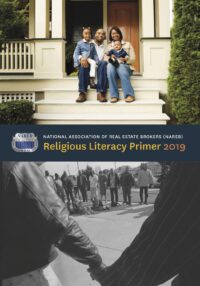Orientation/Classification: Islam
Adherents Consider Themselves: Muslim
House of Worship: A place for Muslims to gather for Salat (ritual prayer) is called a masjid (place of prostration) or mosque. In the U.S., many cities have at least one Islamic Center, which includes a mosque but also features facilities for education, religious counseling and dispute settlement.
Religious Leader: The religious leader is called an Imam, or Sheikh, though often a mosque is run by a board of lay leaders.
Population: The U.S. Muslim population is estimated at about 7 million.
PHYSICAL INTERACTION
Some observant Muslims refrain from all physical contact with persons of the opposite sex who are not members of their family.
OTHER (GENDER, DRESS, ETC.)
Mixed-gendered prayer is generally led by men; women will lead other women in prayer. Women leading mixed-gendered prayer is rare. Scholars of Islam can be men or women.
Congregational leadership positions are often held by men, though in some sects women hold equal position. Notions of gender norms vis-àvis congregational leadership vary greatly. Some Muslims believe that men and women who are not immediate members of the same family should not interact socially or have physical contact with one another. (The views on this point are quite wide-ranging among U.S. Muslims.)
FOOD
Many Muslims believe in only eating halal food, especially halal meat. Vegetarian meals are generally acceptable. Poultry, mutton and beef are halal if the animal has been slaughtered in accordance with Islamic law; some Muslims may accept Kosher meat as fulfilling this requirement. Muslims are not to eat pork in any form; foods and utensils that have come into contact with pork should not touch any food to be eaten by a Muslim. Fish is acceptable, but some Muslims refrain from eating shellfish. Consumption of alcohol in any form is forbidden. (Some Muslims say that this includes alcohol used in cooking; others say that cooking dissipates the alcohol, so the food may still be eaten.) In general, it is best to omit alcohol, including items like vanilla extract, in cooking. Many Muslims believe that food should be eaten only with the right hand.
Muslims fast from dawn to sunset during the month of Ramadan/Ramazan; some fast in a similar fashion at other times during the year.
DRESS
Many Muslim women wear the hijab (headscarf). In addition to the hijab, some women wear a loose garment leaving only the hands showing in public or in the presence of men who are not family members. A few Muslim women wear a niqab (face-veil). Observant men are to cover their bodies from navel to knees when in public; some devout male Muslims prefer to wear a head-covering at all times.
SCHEDULING MEETINGS
Muslims follow a 12-month lunar calendar. Major observances include:
- The First of Muharram, commemorating the date on which the Prophet and his community made the Hijra (migration) from Mecca to Medina—begins the new Islamic year (celebrated by some branches of the Muslim community; merely noted by others).
- The Ten Days of Muharram: days of lamentation observed by Shia Muslims in remembrance of the martyrdom of Imam Hussein bin Ali, the grandson of the Prophet, at Karbala (Iraq) in the Islamic year 61 (680 CE).
- Ashura (the Tenth of Muharram) is observed by some Sunni Muslims as the anniversary of the day on which God created Adam and Eve, heaven and hell, the tablet of the decree, the pen, life and death.
- Milad al-Nabi (the Prophet’s birthday). Because this observance lacks a basis in the Quran, some Sunni Muslims believe there should be no special celebration of this occasion.
- Ramadan/Ramazan: a month of fasting from food and liquids (and from intercourse and smoking) during daylight hours.
- Laylat al-Qadir (Night of Power): all-night prayer during Ramadan.
- Eid al-Fitr (Festival of Fast-Breaking): three-day celebration at the end of the month of Ramadan, including special prayer as a community in the mosque, visits with family and friends, special foods, the giving of gifts to children, and making a special charitable donation.
- Eid al-Adha (Festival of Sacrifice): a four-day commemoration of Abraham’s willingness to sacrifice his son that begins on the tenth day of the month of the annual Hajj (pilgrimage), and includes donation of food to the poor.
GOVERNANCE
There are no senior Muslim clerics in the U.S. with authority over all other imams in the country. Many communities have an Imams Council, sometimes called a Shura Council, which addresses areas of concerns to local Muslims, engages in advocacy, provides social services and issues opinions on matters of Islamic Law. Many U.S. Islamic centers and mosques are independent, and are overseen by a Board of Directors. For many U.S. Muslim congregations, the President of its Board of Directors is the chief decision-maker, and may also be its most public representative; for others, this role is assumed by (or is shared with) the Imam.
HISTORY
Sunni Islam is the largest branch, accounting for nearly 80 percent of all Muslims. The second largest branch of Islam is called Shia. Islam means “submission to the will of Allah (God).” As a religion, Islam has three essential aspects: submission (normative practices), faith (normative doctrines) and the doing of the beautiful (rooted in God-consciousness).
Core practices (called the Five Pillars of Islam by Sunni Muslims) are Shahadah (testimony to God’s Oneness and Muhammad’s Prophethood), Salat (daily ritual prayer), Sawm (the annual fast during the month of Ramadan/Ramazan), Zakat (charity), and Hajj (pilgrimage to the Kaaba in Mecca, if health and means permit).
The religion was founded by the Prophet Muhammad (570 – 632 CE), also transliterated Mohammad, Mohammed or Muhammed. Some Muslims believe that the Quran should not be touched by non-Muslims, except with a cloth. Any copy or translation should be handled with respect by all.
This section is adapted from the Religious Literacy Primer (2014).
